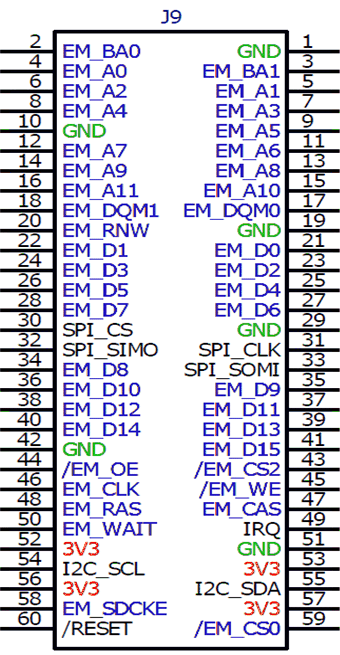SPRUI76B March 2017 – June 2022 TMS320F28379D , TMS320F28379D-Q1
4.2 External Connector – J9
External connector, J9, can be used to connect the controlCARD to another board. The ability to connect up to EMIF2, SPI-C, I2C-A, and 2 GPIO are provided – although any peripheral mux option provided on these GPIOs is technically possible.
Note that the GPIOs (122-125) that attach to the SPI portions of this connector, also go to the microSD connector. At any specific time, only one should be used to avoid contention.
Note that the GPIOs (53-68) that attach to the EMIF data lines of this connector and GPIOs (91 and 92) that attach to the I2C portions of this connector also go to the baseboard via the HSEC connector. These GPIOs should either be used to connect to the baseboard OR utilized on this header to avoid contention.
Figure 4-2 shows the connector that mates with J9 is the Hirose DF40HC(4.0)-60DS-0.4V(51).
 Figure 4-2 Hirose DF40HC(4.0)-60DS-0.4V(51)
Figure 4-2 Hirose DF40HC(4.0)-60DS-0.4V(51)